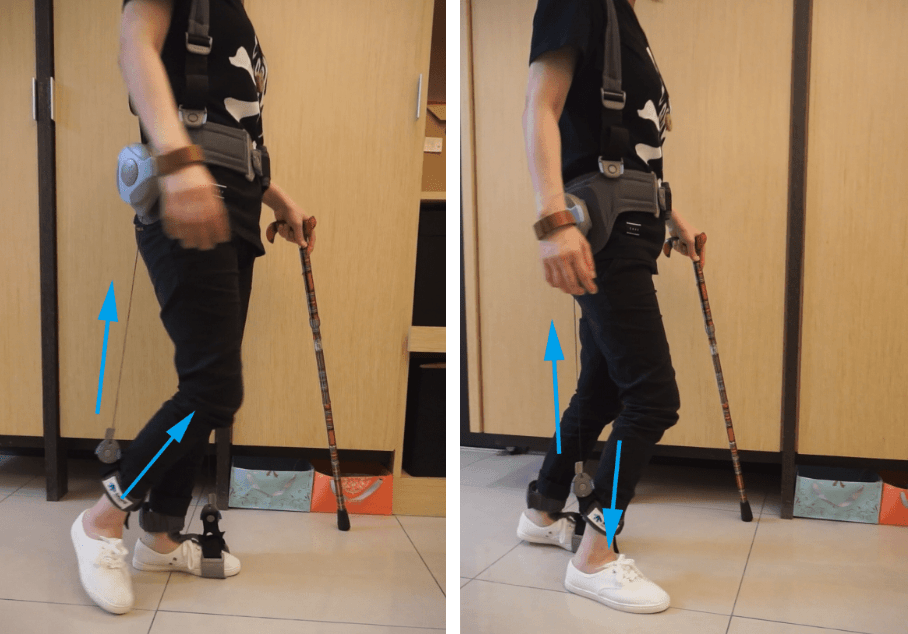In rehabilitation settings, time and efficiency are two of the most valuable resources. With increasing patient loads, limited staff, and rising expectations for individualized care, the need for smart, scalable solutions is more pressing than ever. The Just Walk system offers an innovative response to these demands, helping rehabilitation centers optimize workflows, reduce therapist burnout, and deliver consistent, high-quality patient care.
Reducing Therapist Burden Without Sacrificing Quality
One of the most significant challenges in rehab centers today is balancing patient needs with staff availability. Traditional gait rehabilitation often requires one-on-one supervision, limiting how many patients a therapist can manage in a day.
Just Walk changes that equation.
Its lightweight, wearable, and electricity-free design enables patients to engage in functional gait training with minimal supervision. Therapists can focus their attention on complex cases or evaluations, while patients continue to progress independently with the device. This redistribution of effort improves overall clinic flow and alleviates unnecessary therapist overload.
Scalable Care for Growing Patient Demand
Whether managing orthopedic recovery, neurological impairments, or post-operative mobility deficits, rehab centers are seeing a steady rise in patient volume. Just Walk supports scalable care by making it feasible to supervise multiple patients simultaneously.
This is particularly valuable for outpatient and community-based centers, where resources are often stretched. By integrating Just Walk into daily practice, clinics can increase throughput without compromising safety or outcomes, helping facilities serve more people with the same staff.

Smoother Workflows and Seamless Integration
Just Walk is intuitive to use, requires no calibration or setup delays, and fits into most existing therapy programs. It enhances workflow by eliminating the need for large, powered gait systems that are often costly and time consuming to operate. Its design supports a seamless transition between in-clinic and home use, maintaining therapeutic continuity and reducing the need for repetitive reassessments.
Key Benefits of Just Walk for Operational Efficiency
- Therapist Time Optimization: Patients can use the system independently, freeing up therapists for evaluations and complex care.
- Higher Patient Capacity: Enables simultaneous use by multiple patients, increasing clinic productivity.
- Reduced Equipment Bottlenecks: No scheduling delays or staff required for setup and monitoring.
- Lower Training and Onboarding Time: Easy to learn and deploy for both staff and patients.
- Enhanced Continuity of Care: From clinic to home, ensures treatment remains consistent and effective.
- Improved Staff Satisfaction: Reduces physical strain and burnout from hands-on gait support.
Efficiency Without Compromise
Just Walk allows clinics to do more - with less. By streamlining clinical operations, reducing dependency on constant supervision, and empowering patients to take an active role in their rehabilitation, it transforms how modern rehab centers function. In a field where time, care quality, and scalability must align, Just Walk is more than just a device, it’s an operational advantage.
Empower your team. Streamline your care. Just Walk!
For more information, visit our Just Walk page and discover how it can transform your rehabilitation workflow.
FAQ
1. How does Just Walk help reduce therapist workload?
By allowing patients to perform gait training independently, it frees therapists to focus on higher-need cases.
2. Can it be integrated into existing rehab protocols?
Yes. Just Walk requires no electrical components or setup time, and fits easily into standard therapy sessions.
3. Is the device safe to use with minimal supervision?
Absolutely. It’s designed with adjustable resistance and a non-electric mechanism, making it safe and stable for independent use.
4. How does it benefit workflow in busy outpatient clinics?
It reduces delays, increases throughput, and minimizes the need for one-on-one therapist time per patient.
5. What kind of patients benefit most from its use?
Patients recovering from orthopedic surgeries, neurological impairments, and mobility limitations, including returning veterans with functional disabilities.
6. Does it require specialized staff training?
No. The device is intuitive and quick to learn, minimizing onboarding time for clinicians and patients alike.



